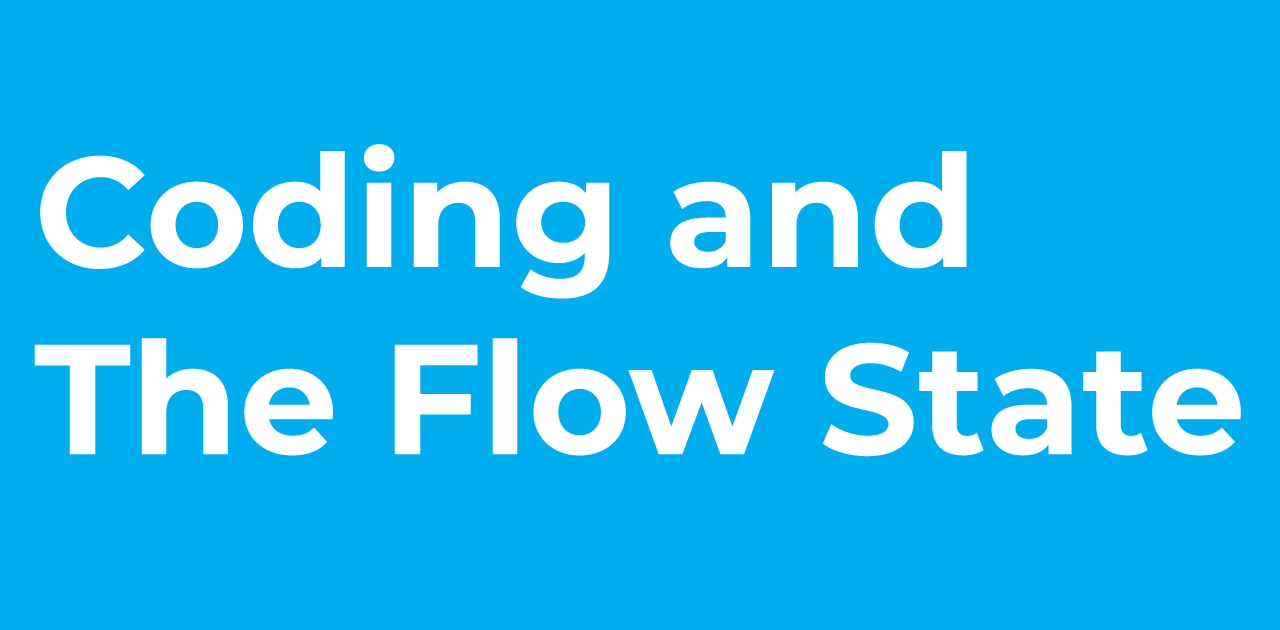Have you ever been so caught up in an activity that you started to lose track of reality? You feel no hunger, thirst, tiredness, or anything that could imply you have to interrupt that activity to do something else. But, regardless of that, you are happy, confident, energized, focused, and motivated. Mihalyi Csikszentmihalyi, one of the founders of positive psychology, defined this as a state of flow. To quote him, flow is “a state in which people are so involved in an activity that nothing else seems to matter; the experience is so enjoyable that people will continue to do it even at great cost, for the sheer sake of doing it”.
If you’re curious whether or not you enjoy working in a specific field, check if you’re ever fully immersed in one of your tasks. Do you lose track of time? Do you forget to eat, drink, or take a rest? Not because you don’t want to, but because you are so involved in what you’re doing that nothing else seems to matter besides it. It’s just you and your work. And, while you’re experiencing flow, it feels like nothing could come between you two. Experiencing this state at the workplace has its benefits, but it can also come with some downsides as well.
Definition of the Flow State
Before diving into the good and the bad parts of the flow state in the workplace, let’s first see what defines it. According to Csikszentmihalyi, 8 characteristics can tell whether we’re “flowing” or not. These are:
- Complete concentration on the task;
- Clarity of goals, reward in mind, and immediate feedback;
- Transformation of time (it can either speed up or slow down)
- The experience is intrinsically rewarding;
- Effortlessness and ease;
- There is a balance between challenge and skills;
- Actions and awareness are merged, losing self-conscious rumination;
- There is a feeling of control over the task.
What’s also important to note is that every experience can differ from the previous one. While sometimes we can get into this state in a matter of seconds, right after we start working on a task, there are also times when it might take a while to achieve flow. Why, tho? Well, because before becoming fully immersed in an activity, we have to tick a few requirements. For example, being surrounded by distractions will affect your concentration level and might make it impossible for you to “get flowing”. So, for starters, try keeping distractions away.
Another thing that might keep you away from the state of flow is the task’s complexity level. If it’s too complicated, you will feel stressed. But, if it’s too easy, you will be bored. To “flow”, the tasks have to be somewhere in between challenging and easy-peezy-lemon-squeezy.
“Inducing flow is about the balance between the level of skill and the size of the challenge at hand”
(Nakamura et al., 2009)
For more on how how to achieve flow, check out Csikszentmihalyi’s TEDTalk where he shares more on the subject. You can find it below.
Benefits of being in a state of flow in the workplace
There are many ways you can benefit from being in a state of flow in the workplace. One of the best things is that you can tell if you’re happy at work or not. If you can get fully immersed in your tasks, it’s a sign you enjoy what you’re doing. For example, if coding gets you in this mood from time to time, you can be sure you did something right when you picked your career path. And, if it doesn’t, you might consider switching to something else.
Also, people who get in the state of flow are happier at work and more productive. While doing his research, Csikszentmihalyi saw that “flow is not only essential to a productive employee, but it is imperative for a contented one as well.”. Considering that we probably spend around 8 hours/day and 5 days/week at work, it’s important we do something that allows us to “get flowing”.
Possible negative effects
However, while being in a state of flow at work help us feel more fulfilled and makes us more productive, we should be aware of its possible negative effects as well. During this state, it’s normal to lose track of time and needs such as hunger, thirst, or sleep. So, “flowing” too much might harm us. As a software developer, you can find yourself so immersed in coding that you forget to take breaks. Your eyes might get tired and you’d keep on coding. You might get sleepy and you’d keep on coding. But how can you avoid falling into the “overflowing” side? Well, keeping a healthy balance between you and your work should keep you away from that. Keep in mind that flow is not about maximizing work performance, but about enjoying your activity so much that you become one with it.
Final thoughts
Although we’ve only talked about flow state at work, know that you can experience it during any other kind of activity too. Some examples would be walking, dancing, painting, taking pictures, or singing. Flow comes naturally while you’re involved in anything you enjoy doing. And you don’t have to experience it on your own. This state can exist in groups or teams which are fully committed to what they’re working on at that moment. If your teammates are on the same wavelength as you when it comes to “flowing”, you’ll notice a boost in creativity, motivation, and productivity.
To find out more about the state of flow, you can check out this video, or this video, or this video. To read more about it, check out this article, or this article, or this article.




